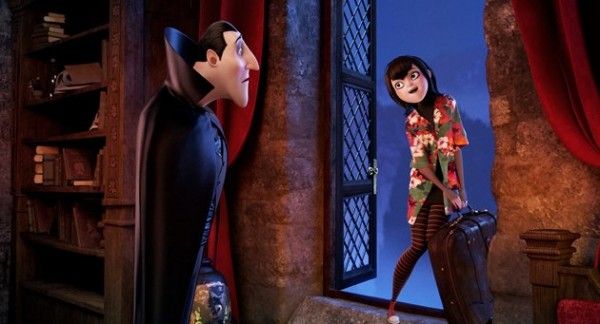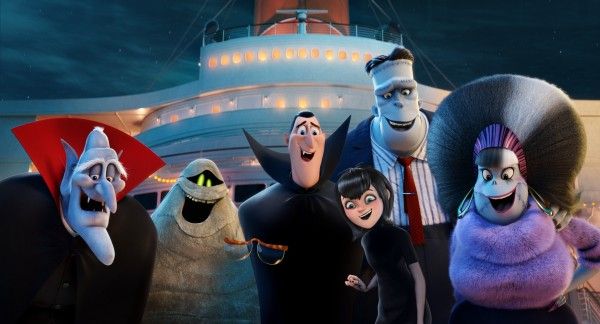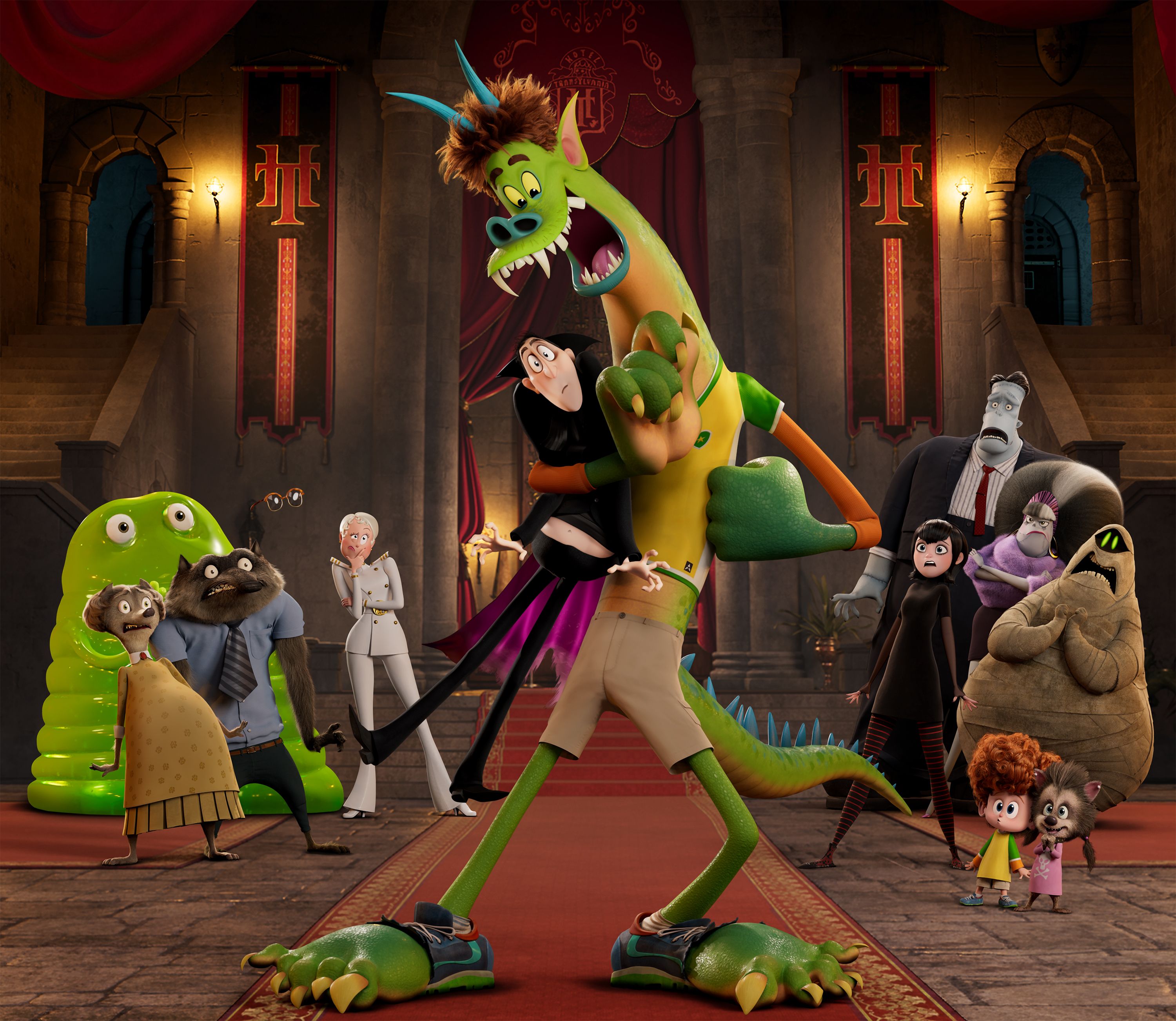With the first trailer for Hotel Transylvania: Transformania now online, I recently spoke to producer-writer Genndy Tartakovsky and directors Jennifer Kluska and Derek Drymon about making the upcoming sequel that arrives in theaters July 23rd. As you can see in the trailer, the sequel finds Johnny becoming a monster and Drac and his monster friends turned into humans when Van Helsing's "Monsterfication Ray" goes haywire. It’s then a race to find a cure before their transformations become permanent.
During the interview, Tartakovsky, Kluska, and Drymon talked about how they came up with the story, what they each wish people knew about making an animated movie, how technology has changed the way they make these films, the way Tartakovsky pitches the studio on the idea, why removing a big five-minute sequence from the 3rd act made the film even better, Easter eggs, and more.
Hotel Transylvania 4 features Brian Hull as Dracula, who replaces Adam Sandler in the role from the previous three movies, along with Andy Samberg as Johnny Loughran, Selena Gomez as Mavis, Kathryn Hahn as Ericka Van Helsing, Steve Buscemi as Wayne, David Spade as Griffin, Keegan-Michael Key as Murray, Asher Blinkoff, Brad Abrell, Fran Drescher as Eunice, Jim Gaffigan as Professor Abraham Van Helsing, and Molly Shannon.
Check out what they had to say below.
COLLIDER: I showed the trailer to my sister's kids and then proceeded to have to watch the trailer about 10 more times because they informed me that they needed to watch it a number of times. So, I think you have a hit. I am curious how the pandemic impacted testing the movie to find out exactly what you had because I would imagine you want to show this to kids and families and see what they're thinking.
JENNIFER KLUSKA: Yeah. I mean, it definitely did. We obviously couldn't have audience screenings due to safety protocols. It's like your situation, the kids who saw it were the kids who were on the crew. Like the children of the crew members, sort of seeing that was a lot of our answered feedback from kids.
COLLIDER: Jumping into the most basics of questions right at the beginning. For people that are curious about the film, what can you actually say about the story? What do you want to tell people about the film?
GENNDY TARTAKOVSKY: I think the film as we know, from the trailer, it's a story about Johnny and Drac and Mavis, and basically the whole hotel gets turned upside down. The humans become monsters and monsters become humans. And it's a way to explore our kind of family dynamic in this completely new way. But still through the life of the franchise, you build these characters, right? To hopefully seem that they're alive. Now with this fourth movie, they are and so now we can put them into this crazy situation. So, we're exploring all these family relationship themes through this completely crazy thing that's happened to them. So, the adventure is big, the adventure's grand, the comedy's crazy and cartoony but at the core, it's still about family. And I think that's what been the successful thing from the franchise.
COLLIDER: I'm always curious about how you finally say, "Okay, this is the story we're going to do." Because I would imagine when you're developing ideas, it could obviously go in a million directions. Did the fourth movie ever come close to being something else?
TARTAKOVSKY: I think it started out as something else. Yeah. Yeah, for sure. It's very interesting me because coming from TV... Like we do something and then you trust it and there's no time or money to redo it and so six months later it's on the air, right? And you've got to live with it. In features, it's like you do something, it gets ripped apart then you put it back together. It gets ripped apart and you put it back together. At the end of the day, you go through this journey to see what survives and usually what survives is pretty strong. So, I think this idea started out quite different... The core of the transformation was there. I think it actually started with just Johnny's transformation, if I remember correctly. Then it started to organically build into everyone.
KLUSKA: It was just Johnny, than it was just Drac and Johnny, and then it was everybody.
TARTAKOVSKY: Yeah. I think I even made a joke in one of our very first story meetings, when we started talking about transformation and somebody brought up like, "What about other people?" And we were like, "No, it doesn't make sense." I think I made a joke where it's like, "Well, we might as well just turn everybody because at the end of the day, everybody's going to be changing." But then we had to go through the organic process to get to that point.
COLLIDER: For all three of you, you guys are obviously all experts in the field of animation and you know the behind-the-scenes secrets. For each of you, could you sort of talk about what you wish people knew about the behind-the-scenes of making an animated movie?
KLUSKA: Oh, wow.
TARTAKOVSKY: Interesting question….What part of the process I think most people don't understand...It's actually such a good question. Usually you answer more normal stuff.
DEREK DRYMON: I would say it's a very, very collaborative process. Especially if you're not in the art world, it may be hard to understand like how does a painter drive with a person composes music who, and then another person who does sound effects. And then you have people who draw and producers and artists who don't draw and things like that. So, it's writers. It's just a big hodgepodge of almost all the arts. And think about its music, sound, and visuals and how all those very different people, with very strong opinions and very rarely agree, have to kind of get together through compromise and arguing and pushing and shoving and then working together. You come up with something that's kind of better than any one person could have done.
KLUSKA: In that same vein. Like, you don't get anything for free in animation. Actors like this are who they are, that they look like, locations are what they are, you scouting kind of look for but in animation like, everything you have to make from scratch. Like, right down to like...
DRYMON: What is does a fork look like?
KLUSKA: Yeah, what does a fork look like? What do things sound like? It's the challenge of making a very spontaneous feeling piece of entertainment because like, that's what you want. You want the energy and spontaneity of like real life, but where you have to plan every single part of the process and often very far in advance. So, the making of these movies are very counter-intuitive from what people will think.
TARTAKOVSKY: I think I would say the scrutiny of every single frame. I think that's the thing you that thinking. In features, you've got this, whatever, between 70 and 80, 90 minutes whatever it is for two or three years of production. And then every part of it gets worked and reworked to make sure that it's all perfect. So, I think that's the part where people... I have such a hard time watching stuff with an audience, because I started looking at the audience not paying attention. And just like looking away for a second, you go, "Oh my God, that's three months of work you just missed." I know it's just the reality. We do it too. If we watching some live action movie and we take a sip of coffee and look away for a second. But for me in the theaters, it's a killer because you just know how much work went into this, from all these different people. And people work the weekends and all the sacrifice and then somebody just...And that's it and it's gone.
KLUSKA: That eyeball someone worked so hard on making it just right, you lost it.
COLLIDER: I'm fascinated how technology impacts filmmaking. What do you think was able to be done on this movie that you couldn't have done on the first one?
TARTAKOVSKY: Well, I think from the first one... We wouldn't be able to make this movie back then because everything has been changed and written for and designed for the Hotel Transylvania style of filmmaking, the cartoony animation, the way the fabric and the natural lights things work with this cartoony sensibility. The experience to animate in this way. Like we had a small team, I'm thinking of about like 35 animators in the first movie. And for each movie, it's grown to a bigger and bigger pool of animators. But just technology, I think it is just faster, also. We see things so much quicker and I'm not the best to speak of the technology but I know for sure that there's a comfort with the style because we've done it in the other movies too.
COLLIDER: For each of you, what is something that you are looking forward that an animated movie will be able to do, that maybe it can't do right now?
DRYMON: I come from TV also and the 2D stuff, anything you think of in 2D, you can draw. And one of the things that when I started work years ago, I drew a gag of a guy sweaty and it had like, all these beads of sweat just poured down his head. And the director said, "That would cost their retire FX budget," Just for that one joke. Which, in 2D, to draw that it's like a nothing joke. And then as years have gone on, waters become easier. Taking a hat off different characters become easier, but it's still an issue with the closer it gets to drawing, like you even say, you have them drawing... The closer the CG gets to that. I think the more creative you can be. Sometimes you can't do a joke because technically it would cause too much or it's too hard to do.
KLUSKA: We didn't build that part of set, you can't put the camera there. I think that's part of it.
TARTAKOVSKY: And I think for me, I've never paid attention to technology because I feel like, the technology is growing at a great rate, right? But the storytelling is pretty stagnant. So, as soon as the storytelling catches up to the technology, that's when things will be really different, than great. Essentially everybody's still making very similar films, where we could be doing much more different things. Like if you look at TV, animation now is adult and action and drama and horror, right? Features are still... We're kind of in this kind of zone, right? So, I think that technology can open that up a lot too.
COLLIDER: I would love to have a conversation about that. What you just brought up as a completely separate thing because I think there's so much room for that. But Jennifer and Derek, I am curious, this is, I believe your first time directing a feature animated movie. What do you wish you knew on day one that you now know?
KLUSKA: I wish I knew I didn't have to buy as many pants because we've been sitting at home the whole time. The one thing I will say we did with this sort of tricky that the process of doing this the way we have been, I think has been really interesting, something Derek and I are also both come from television and that being totally remote from your crew has been almost like more of a TV model of almost like making these and how we sort of interact with the process. So, it feels like the feature experience has almost come more to TV and of course, Genndy like your whole approach with like, you commit to an idea and you run with it, has been always pretty much the Hotel model. So, it feels like it was sort of a very familiar sandbox to play in, which has been really great.
DRYMON: And I would say, "It's interesting as you jumped from like, from television, which is like 11 minutes, and then I've done commercial work, which is like anywhere from 10 seconds to a minute. And then features are whatever, 70 to 90 minutes. And it's all kind of the same, but different. The story structures are different in those different time zones, but the work itself is the same. You have to develop an idea. You have to kind of work it up in editorial. You kind of work with artists and actors and musicians to kind of bring that to life and then you mix it. So, the process, it features was always a little intimidating, but just because I hadn't done it, and it felt so big. But then once you start doing it, you're like, "Oh, it's kind of the same as everything else. It takes a lot longer to make it. So, maybe that might've been the thing to know, is just to not be so worried about it.
COLLIDER: I love Easter eggs in movies. Are there any Easter eggs in the fourth film or were you just so nervous about getting the movie done that you're like, "No." I can't think about that right now?
TARTAKOVSKY: Actually, it hasn't been a big part because I'm not a big fan of Easter eggs. It's not a big deal for me. So, I think the first three movies didn't have a lot, if any. And usually I find out after the fact that maybe animator did something that I didn't realize, it's part of something that they're referencing or something like that. But I don't know the fourth one, maybe Jen or Derek through stuff in, that I weren't unaware about, I don't know.
DRYMON: You'll have to watch it to find out.
TARTAKOVSKY: Oh, secret. Yeah.
COLLIDER: So Genndy, this is a quick question for you. I'm curious what goes on behind-the-scenes when you're pitching the studio on this idea, or after you've delivered three super successful movies, they sort of are like, "Well, whatever he comes up with, we're going to take some faith that it's going to be good." I'm curious like, how does that work behind-the-scenes with executives or studio people?
TARTAKOVSKY: Well, you don't get a free pass. Like whatever I want to do, it gets done. We’re dealing with a lot of money. It's the easiest because there's certainly a lot more faith and trust because you've delivered and it's been successful. And so, it's more about, is the idea big enough and different enough and interesting enough to warrant all this work that everyone has to do. And then as soon as you say an idea that everybody goes, "Oh yeah, that totally makes sense." Then all of a sudden, you know you've got something special. So, once we hooked on to the transformation, the first one with Johnny, it was just figuring out what's the best setup and story and emotional and the heart for that. We knew the comedy was going to be easy. So, Johnny is a monster and then of course, Drac as a human, that was a slam dunk right away. So, now it's building your foundation for the gags, basically.
COLLIDER: I'm always curious about the editing process. What was the last thing that you cut out of the movie before picture locking and why?
KLUSKA: Oh, wow. That might almost be way too spoilery but…
DRYMON: We had to cut five minutes out of the picture, just because for running length and we got to cut a big story feature out. We were nervous about it but then after we cut it actually kind of streamlined the third act and it was a worry, but then it turned out to be kind of improved things. So, it was kind of a lucky break that we got that note, right?
KLUSKA: Yeah. It was one of those things that like, it's like a terrifying note born of necessity, and then you do, and you're like, "Oh wow, this actually made it a lot, lot, lot better. So, it was basically a run and learn and also maybe it was type of technology. It was something that like, can do this? Or then we put more of our time into the comedy and gags and not the technology and always going into the comedy, is always the best way to go. So, we kind of refocused on the comedy rather than like the really complicated visuals. And it made everything a lot more streamlined, a lot funnier.
COLLIDER: Where were you in the process where that got cut? Was it close to finished or was it like really rough animation?
KLUSKA: It was not animated.
COLLIDER: So, it was like storyboard stuff.
KLUSKA: Yeah.
DRYMON: We could only cut from the area of the movie that was storyboarded. So, if anything was in layout or if anything was in animation, we couldn't touch it. So, we're really limited as to what we could cut. So, it was a good challenge.
TARTAKOVSKY: If it's animated, it's like live action. If it's shot, most likely it's going to be in the movie. It's very rarely that we'll throw away animation.

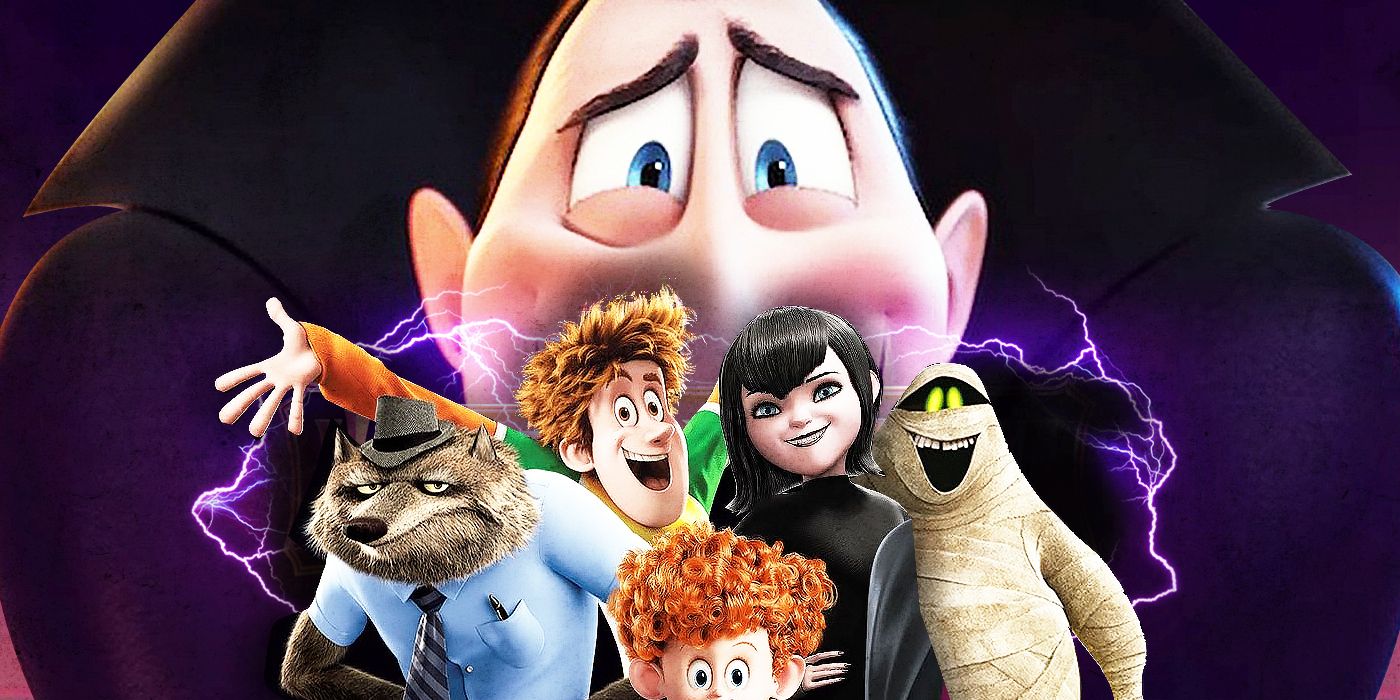
.jpg)
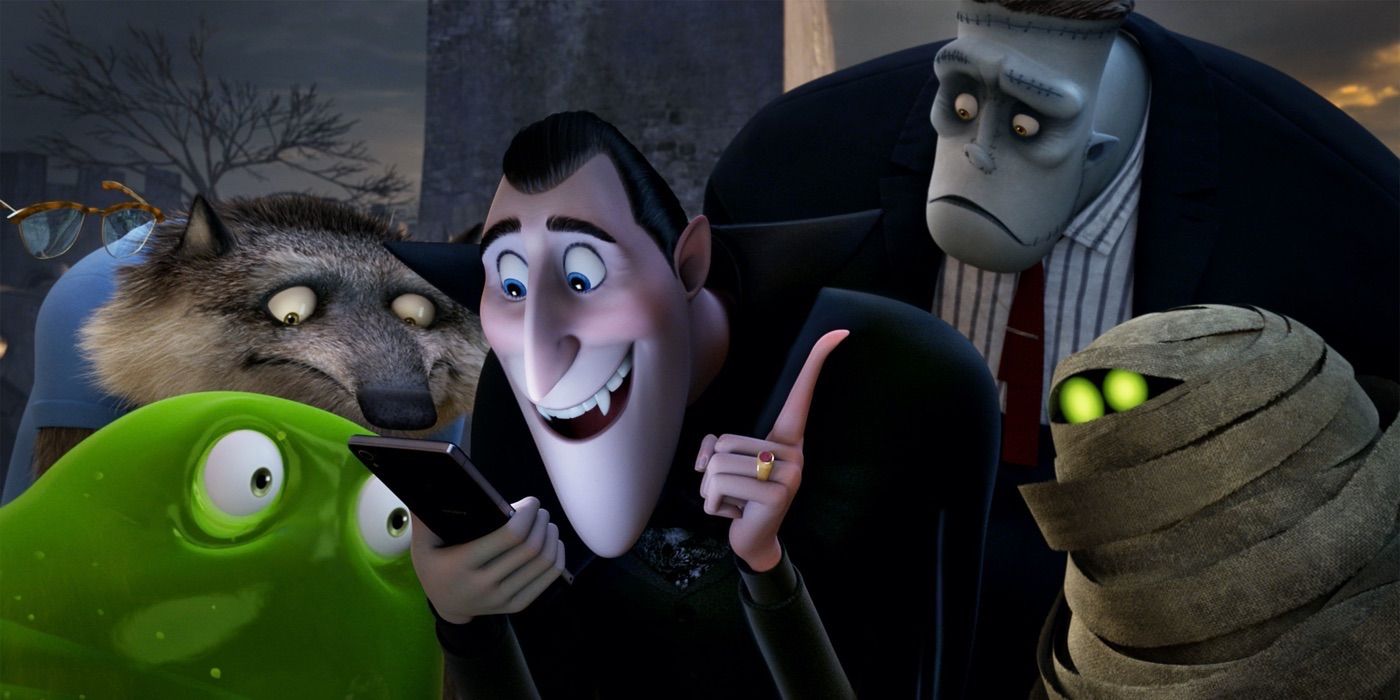
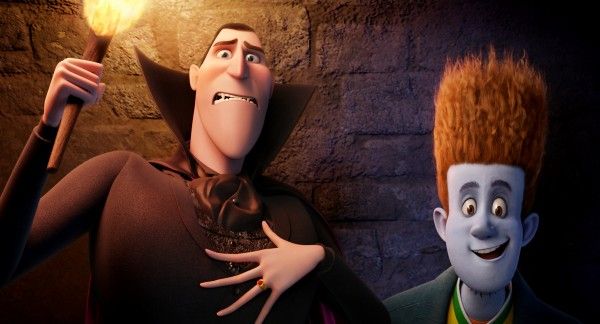
.jpg)
